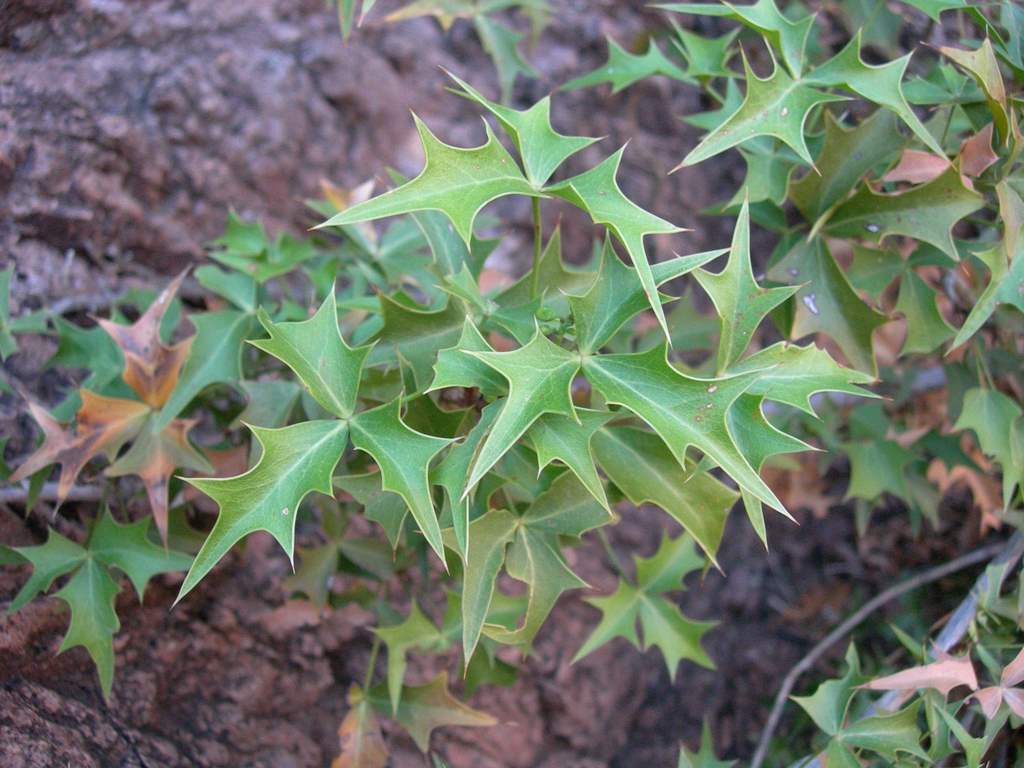Search
Berberis
|
Family: Berberidaceae |
Shrubs or subshrubs , evergreen or deciduous, 0.1-4.5(-8) m, glabrous or with tomentose stems. Rhizomes present or absent, short or long, not nodose. Stems branched or unbranched, monomorphic or dimorphic, i.e., all elongate or with elongate primary stems and short axillary spur shoots. Leaves alternate, sometimes leaves of elongate shoots reduced to spines and foliage leaves borne only on short shoots; foliage leaves simple or 1-odd-pinnately compound; petioles usually present. Simple leaves: blade narrowly elliptic, oblanceolate, or obovate, 1.2-7.5 cm. Compound leaves: rachis, when present, with or without swollen articulations; leaflet blades lanceolate to orbiculate, margins entire, toothed, spinose, or spinose-lobed; venation pinnate or leaflets 3-6-veined from base. Inflorescences terminal, usually racemes, rarely umbels or flowers solitary. Flowers 3-merous, 3-8 mm; bracteoles caducous, 3, scalelike; sepals falling immediately after anthesis, 6, yellow; petals 6, yellow, nectariferous; stamens 6; anthers dehiscing by valves; pollen exine punctate; ovary symmetrically club-shaped; placentation subbasal; style central. Fruits berries, spheric to cylindric-ovoid or ellipsoid, usually juicy, sometimes dry, at maturity. Seeds 1-10, tan to red-brown or black; aril absent. x = 14. Many species of Berberis are grown as ornamental shrubs. Some species harbor the black stem-rust of wheat ( Puccinia graminis Persoon); the sale or transport of susceptible or untested species is illegal in the United States and Canada. Data on susceptibility of Berberis spp. to infection by Puccinia graminis was supplied by Dr. D. L. Long, U.S. Department of Agriculture (pers. comm.). The berries of many species are edible and frequently are used for jam and jelly. The genus Berberis as recognized below is divided into two genera, Berberis and Mahonia , by some authors (e.g., L. Abrams 1934). Species 1-5 below represent Berberis in the narrow sense (characterized by dimorphic stems, with elongate primary stems and short axillary shoots; leaves of primary stems modified as spines; foliage leaves simple; and inflorescences usually rather lax, with acuminate bracteoles and 1-20 flowers; most species susceptible to Puccinia ). Species 13-22 represent the segregate genus Mahonia (with stems never regularly dimorphic; stem spines absent; leaves pinnately compound; and inflorescences dense, with rounded or obtuse [rarely acute] bracteoles and 25-70 flowers; never susceptible to Puccinia ). Species 6-12, traditionally included in Mahonia when that genus is recognized (L. Abrams 1934), are actually intermediate, resembling Berberis proper in their dimorphic stems, inflorescence structure, and susceptibility to Puccinia , and Mahonia in their spineless stems and compound leaves. Species showing different combinations of the characteristics of the two groups are found in other parts of the world (J. W. McCain and J. F. Hennen 1982; R. V. Moran 1982), so these segregate genera do not seem to be natural. Mahonia is often recognized in horticultural works, but it is seldom recognized by botanists.
PLANT: Shrubs or subshrubs; wood and inner bark yellow. LEAVES: (in ours) odd-pinnate or trifoliolate, the leaflets thick, evergreen, spiny-toothed, more or less conspicuously reticulate-veined. INFLORESCENCE: racemose to corymbose or umbellate, solitary in the leaf axils or in fascicles; ultimate branches of inflorescence (pseudopedicels) arising from the axils of a single bract; bracteoles 0-2, appressed to calyx or 0-1 cm below it. FLOWERS: yellow; sepals 6 or 9, in 2 or 3 series; petals 6, in 2 series; stamens 6, in 2 series; filaments sometimes bearing 2 teeth at apex; anthers opening by 2 apical valves. FRUITS: few-seeded berries. NOTES: Ca. 500 spp. widely distributed in Eurasia and the Western Hemisphere. All the Arizona species belong to the group often segregated as the genus Mahonia on the basis of compound leaves. Fruits of the members of this genus are edible and often made into jelly. Wood is used in folk medicine since it contains berberine, a compound with antimicrobial properties. A brilliant yellow dye has been obtained from roots and stems. Name apparently of Arabic origin. REFERENCES: Laferrière, Joseph E. 1992. BERBERIDACEAE. J. Ariz.-Nev. Acad. Sci. 26(1):2 Sep 6, biseriate, petaloid, subtended by 2 or 3 small bracts; pet 6, biseriate, usually smaller than the sep and each with 2 basal glands; stamens 6; ovary with 1-few ovules; fr a berry; spiny shrubs; primary lvs of the shoot modified into simple or often trifid spines, bearing axillary fascicles of small foliage lvs; fls yellow, in racemes, or contracted into umbel-like clusters, or solitary; fr in ours red. 600, widespread. Gleason, Henry A. & Cronquist, Arthur J. 1991. Manual of vascular plants of northeastern United States and adjacent Canada. lxxv + 910 pp. ©The New York Botanical Garden. All rights reserved. Used by permission. |

